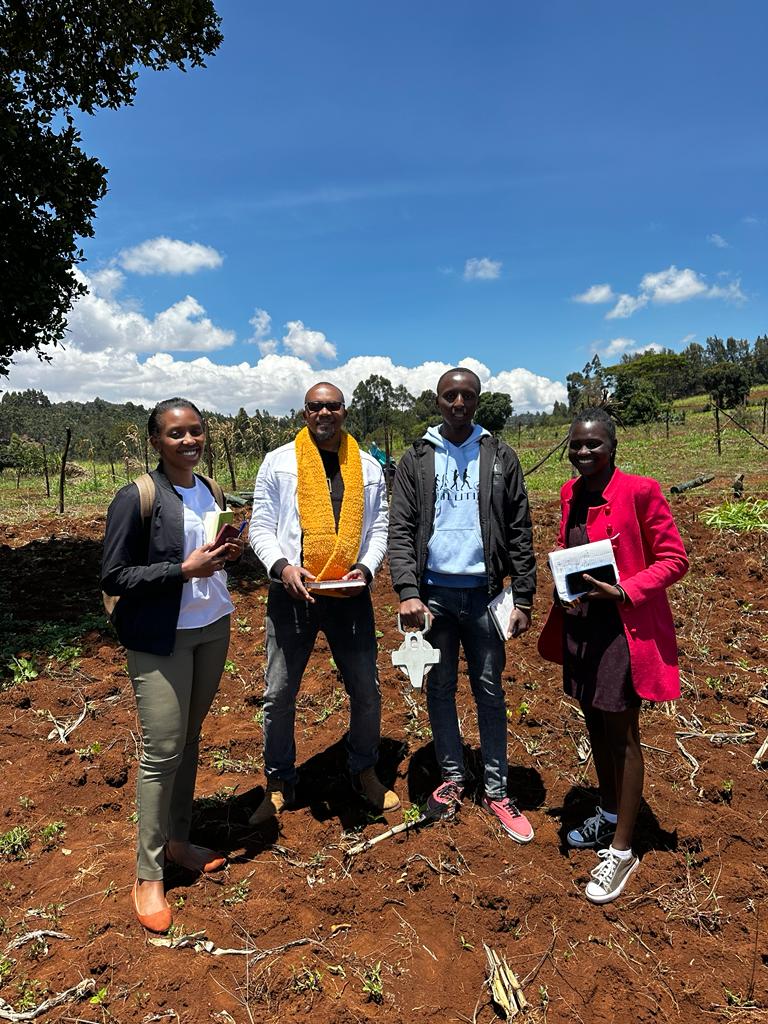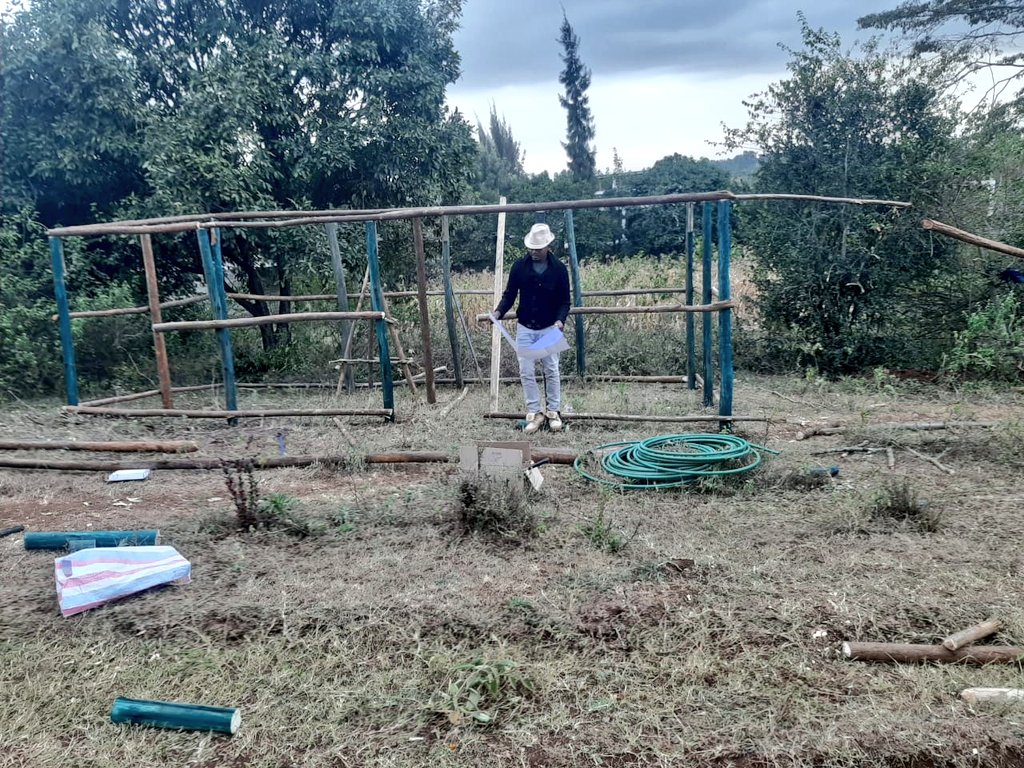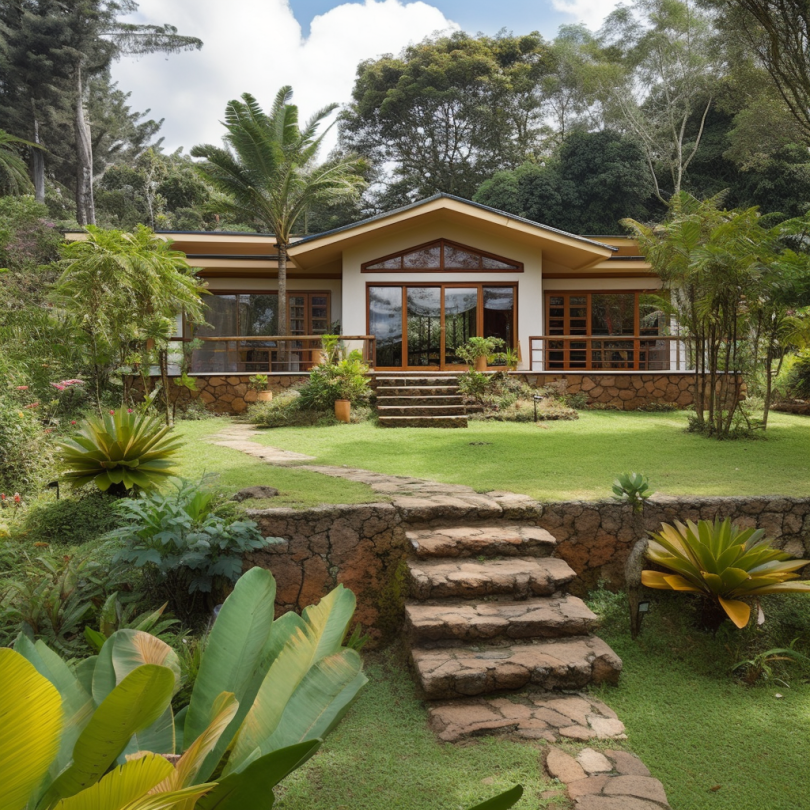Introduction:

As a Quantity Surveyor and Building Contractor, I’ve found that the first step towards creating integrated, human-centered design that is harmonious begins with choosing the right plot. In this post, we’ll explore key factors that make a plot ideal for building a living space.
Section 1: Essential Features of an Ideal Plot
- Location and Orientation: A well-chosen plot is oriented with the road to the north and a garden to the south, allowing for optimal sunlight and a natural shield against noise from the road. This strategic placement fosters a serene and healthful living environment.
- Water Proximity: Securing a plot within one kilometer of a natural water source is akin to finding a gem. It’s a commitment to sustainable living and assures that our homes are in harmony with the environment’s natural rhythms. Such proximity to water enriches the land, making it exceptionally suitable for creating a home. When natural sources are not accessible, piped water from a fresh source is the next best option, ensuring purity and continuity. In locales where neither is available, borehole water might suffice, but it’s not ideal. It’s essential, then, to prioritize locations away from urban pollution, considering rainwater harvesting as a viable and eco-friendly alternative. This proactive approach not only secures our water needs but also aligns with the greater goal of environmental stewardship.
- Street Frontage/Front Yard: A minimum of between 7 metres and 25m/75ft street frontage before the house begins is not just about curb appeal; it is about embracing the community, fostering interactions, and making accessibility a cornerstone of our home. People should own their individual spaces but the spaces between homes should have a semblance of community life. Why do i say this? This is a deliberate choice to weave the fabric of connectivity and openness into the very layout of our living space. Such a generous frontage paves the way for a welcoming entrance, beckoning neighbors and guests alike into our abode, fostering a sense of belonging and community. It encourages spontaneous conversations, shared moments, and the kind of neighborly rapport that builds strong, supportive local networks.
- Moreover, this space becomes an interface between private residence and public thoroughfare, offering safety in visibility and ease in access. Whether it’s children playing on the front lawn, gardeners tending to verdant borders, or friends gathered for a front porch chat, a substantial street frontage is the foundation upon which these daily interactions are built, ensuring that our homes are not isolated islands but integral parts of the communal tapestry.
It’s essential, then, to prioritize locations away from urban pollution, considering rainwater harvesting as a viable and eco-friendly alternative.
David Nahinga, Ja Mjengo Tweet

Section 2: Pre-Purchase Considerations
- Soil Testing: Safety and sustainability start from the ground up. A soil test is not merely due diligence—it is an act of ensuring that the very foundation of our home is strong and suitable. Essential for identifying soil stability and composition, soil testing determines whether the land can support the foundation and structure of your home safely, and informs the necessary construction precautions. Conducting soil testing is a vital step in assessing the composition and stability of the soil, which is essential for determining if the land can safely support the weight of a home’s foundation and structure. Loam and firm soils are especially advantageous as they not only provide ideal conditions for farming due to their balanced texture and nutrient retention but also because they typically exhibit good bearing capacities, often ranging between 150 to 300 kPa (kiloPascals). These soils can reduce the necessity for extensive mass excavation and backfilling, which can be a significant financial consideration. For example, avoiding just 1 meter of unnecessary excavation and backfilling for a standard 100 square meter foundation can save thousands in costs. Soil testing ensures that your building site is optimized for both agricultural and construction purposes, allowing for a more cost-effective and stable development.
- Proximity to Children’s Areas: The laughter of children playing should be a stone’s throw away. Proximity to children’s areas invites a sense of community and is a constant reminder of the joy and vitality of life. Locating recreational spaces for children within easy reach goes beyond mere convenience. These areas are vibrant hubs that encourage social bonds and play a pivotal role in the healthy growth of young ones. Research has shown that children from greener neighborhoods are less likely to develop nearly any diagnosable mental illness, underscoring the significance of access to natural, outdoor play areas. In addition to fostering a sense of community, these spaces can significantly boost property values. Homes adjacent to well-maintained parks and playgrounds often appreciate in value, reflecting the desirability of family-centric locales. The presence of such amenities contributes to the neighborhood’s overall vitality, drawing families and nurturing a dynamic, supportive environment that benefits all residents.
- Community Ties: The idea of having additional plots for friends or community members can transform a neighborhood into a tapestry of familiar faces and shared values.

Research has shown that children from greener neighborhoods are less likely to develop nearly any diagnosable mental illness, underscoring the significance of access to natural, outdoor play areas.
David Nahinga, Ja Mjengo Tweet
Section 3: What to Avoid
- Safety Risks: A plot should be a haven, far from the perils of gas lines, high voltage lines, and the bustle of high-speed roads. The serenity of our sanctuary must be uncompromised.
- Legal Clarity: Shady zoning laws can cast long shadows on our homes. Clear, straightforward legalities ensure that the only surprises we encounter are the pleasant ones. Opt for plots in areas with well-defined zoning regulations to prevent haphazard development, such as the emergence of slums or the construction of high-rise buildings in zones earmarked for low-density housing, which could infringe upon privacy and alter the character of the neighborhood. A transparent ownership process is paramount to ensure that the land is free from legal disputes, caveats, or encumbrances, thus safeguarding your investment and facilitating a smooth development process.
- READ OUR STEP-BY-STEP GUIDE IN BUYING LAND IN KENYA
Definition of Terms and Conclusion:
Building Line (also known as Setback or Building Setback Line):
- This is a line set by zoning regulations defining where a building can be erected in relation to the boundary of the property.
- It dictates the minimum distance a building must be set back from the street frontage or other property lines.
- Building lines are established for various reasons, including ensuring privacy, maintaining the character of a neighborhood, providing room for utilities, and ensuring adequate light and air around buildings.
- The building line ensures that a structure is built within a designated area to prevent overcrowding and to maintain the aesthetic and functional aspects of the community.
Street Frontage:
- This refers to the length of the property along the street or road.
- It is the side of a lot or parcel that is along a public way or a space where the property owner has access to the road.
- Street frontage is important for access, visibility, and determining how a property interacts with the public domain.
In choosing the perfect plot, we’re not just building homes; we’re cultivating our very own corner of the world. It’s about creating a space that not only shelters but also enriches and reflects our deepest aspirations.